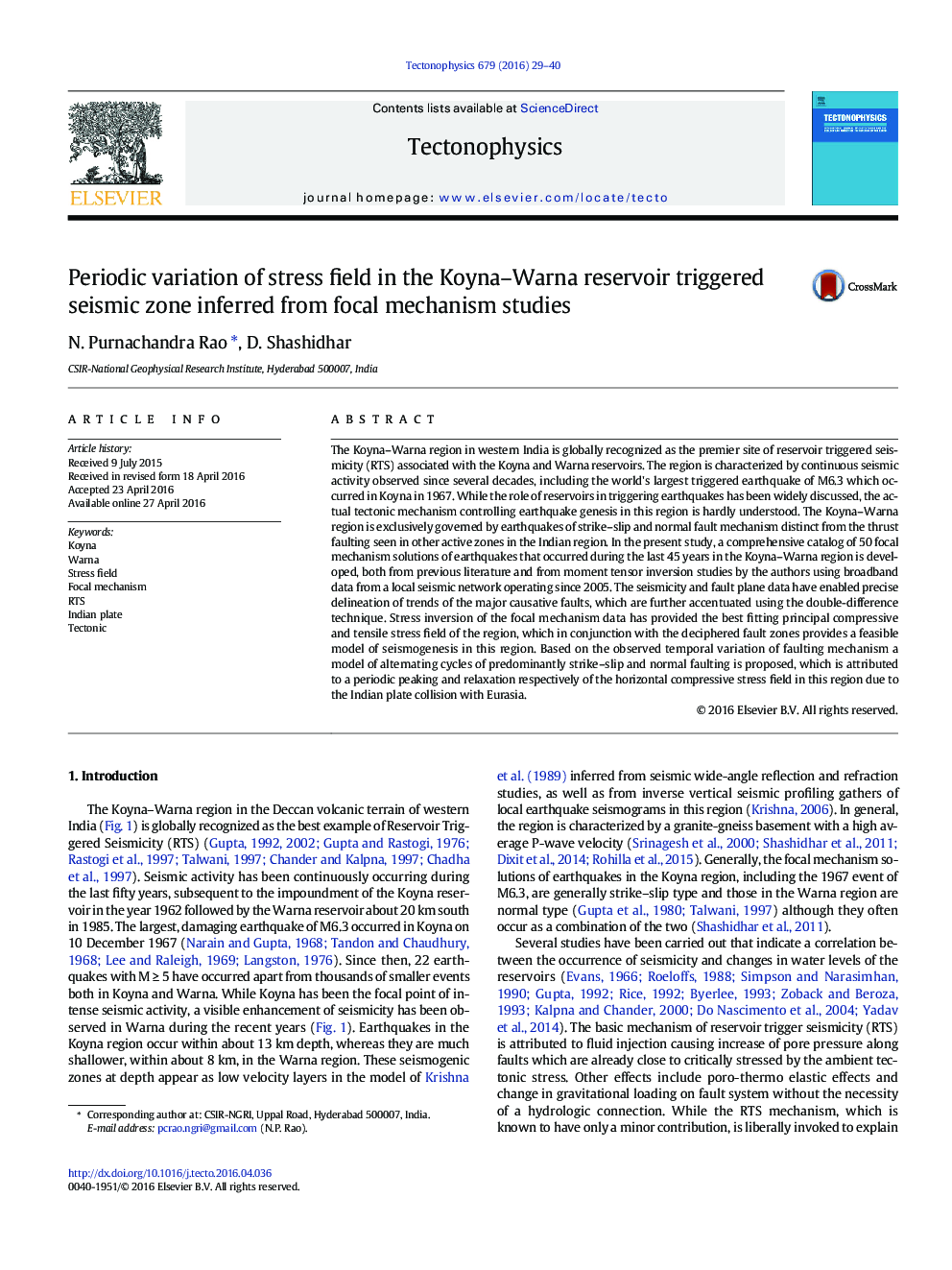| کد مقاله | کد نشریه | سال انتشار | مقاله انگلیسی | نسخه تمام متن |
|---|---|---|---|---|
| 6433428 | 1636719 | 2016 | 12 صفحه PDF | دانلود رایگان |
- Comprehensive catalog of 50 focal mechanisms for Koyna-Warna region
- State of the art waveform modeling approach for moment tensor solutions
- Unique observation of periodic variation in faulting mechanism aided by RTS
- New tectonic model to explain earthquake genesis in Koyna-Warna region
The Koyna-Warna region in western India is globally recognized as the premier site of reservoir triggered seismicity (RTS) associated with the Koyna and Warna reservoirs. The region is characterized by continuous seismic activity observed since several decades, including the world's largest triggered earthquake of M6.3 which occurred in Koyna in 1967. While the role of reservoirs in triggering earthquakes has been widely discussed, the actual tectonic mechanism controlling earthquake genesis in this region is hardly understood. The Koyna-Warna region is exclusively governed by earthquakes of strike-slip and normal fault mechanism distinct from the thrust faulting seen in other active zones in the Indian region. In the present study, a comprehensive catalog of 50 focal mechanism solutions of earthquakes that occurred during the last 45Â years in the Koyna-Warna region is developed, both from previous literature and from moment tensor inversion studies by the authors using broadband data from a local seismic network operating since 2005. The seismicity and fault plane data have enabled precise delineation of trends of the major causative faults, which are further accentuated using the double-difference technique. Stress inversion of the focal mechanism data has provided the best fitting principal compressive and tensile stress field of the region, which in conjunction with the deciphered fault zones provides a feasible model of seismogenesis in this region. Based on the observed temporal variation of faulting mechanism a model of alternating cycles of predominantly strike-slip and normal faulting is proposed, which is attributed to a periodic peaking and relaxation respectively of the horizontal compressive stress field in this region due to the Indian plate collision with Eurasia.
Journal: Tectonophysics - Volume 679, 4 June 2016, Pages 29-40
